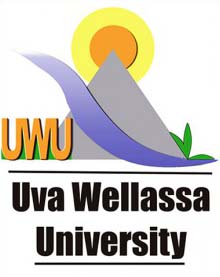01. Status of Soil Chemical Properties in Long-run Sugarcane Soils under Rain-fed Conditions: A Case Study at Settler Estate, Pelwatte, Sri Lanka
B.R. Kulasekara1*, U.W.A. Vitharana2 and U.W.L.M. Kumarasiri1
1Division of Crop Nutrition, Sugarcane Research Institute, Udawalawe, Sri Lanka
2Department of Soil Science, Faculty of Agriculture, University of Peradeniya, Sri Lanka
INFORMATION
Journal Title : Journal of Technology and Value Addition
Volume : 5
Issue : 1
Page : 01– 16
Correspondence : kulasekaraya@gmail.com
ABSTRACT
Pelwatte is a predominant sugarcane-growing region in Sri Lanka, primarily relying on rain-fed conditions for approximately 30 years. This study was conducted to assess the soil status and variability of the Settler region influenced by sugarcane cultivation. The study area covered around 1500 ha of sugarcane-growing lands where the predominant great soil groups are Reddish Brown Earth and Alluvial. A total of 61 soil samples were collected during the soil survey and samples were analysed for soil chemical properties including, pH, Electrical conductivity, organic carbon, total Nitrogen, available Phosphorous, and exchangeable Potassium. Geospatial variability was discerned, and continuous digital maps for each soil property were created using ordinary point kriging interpolation within ArcGIS 10.2 software. The soil pH (6.0 to 9.0, 0-30 cm) was generally favorable for sugarcane, with occasional less favorable isolated patches. Electrical conductivity (0-30 cm) ranged from 0.001 Sm-1 to 0.03 Sm-1, indicating favorable, non-saline soil conditions. Soils in the studied area exhibited a very high variability with regard to total nitrogen (309.3 – 1,064.1 mgkg-1), available phosphorous (0.8 – 33.2 mgkg-1), and exchangeable potassium (non-detectable level – 331.4 mgkg-1) contents. A positive correlation was observed between soil total nitrogen and soil organic carbon, and soil organic carbon levels in the 0-15 cm depth were suboptimal, ranging from 0.3 to 1.1%, raising concerns about its impact on plant nutrient availability. These findings underscore the imperative need for the implementation of a tailored, site-specific integrated plant nutrient management system within the Settler estate of Pelwatte, particularly in light of the observed soil heterogeneity.
Keywords: Digital soil mapping, interpolation, soil chemical parameters, sugarcane
2. Introgression of Blast Resistant Genes (Pita, Pikh, Pitp(t)) of Tetep variety into Local Rice Blast susceptible cultivar Bg94/1 by incorporating PCR-based DNA Markers
W. A. D. Jayawardana1*, G. A. U. Jayaseker1, K. L. N. S. Perera2, S. Mohotti2
1Department of Plant Sciences, University of Colombo, Sri Lanka
2 Genetech Molecular Diagnostic Laboratory, Colombo 08, Sri Lanka
INFORMATION
Journal Title : Journal of Technology and Value Addition
Volume : 5
Issue : 1
Page : 17– 38
Correspondence : amadamsara@gmail.com
ABSTRACT
Rice blast, caused by the fungal pathogen Magnaporthe grisea (anamorph-Pyricularia grisea) is the major rice disease among 85 countries across the world. This research study made progress in the introgression of blast-resistant genes of resistant variety Tetep (Pita, Pikh and Pitp(t)) into local susceptible cultivar Bg94/1 with the aim of developing a durable blast-resistant cultivar. Vietnamese rice variety Tetep and local cultivar Bg94/1 were selected as the donor and recurrent parents. The above rice varieties were grown in the field of RRDI, Batalagoda. During the flowering period, Tetep (donor) and mother parent Bg94/1 (recurrent) were first crossed in order to obtain the F1 population. Once the F1 population was developed, it was grown the same as above, and the F1 plants were crossed with recurrent parent (Bg94/1) to produce the first backcross population (BC1F1). Following the same above mentioned procedure the backcross two generations (BC2F1) and back three generations (BC3F1) were established by crossing BC1F1 plants and BC2F1 plants with recurrent parent plants (Bg94/1). According to the results, most of the plants of all three backcross generations were found to be highly blast-resistant in the phenotypic screening process. The molecular marker genotyping process confirmed the presence of blast-resistant genes Pita, Pikh, Pitp(t) of the parent Tetep variety in the backcross three generation (BC3F1). This concluded the above blast-resistant genes transferred to our backcross generations in an orderly manner from Tetep, hence making them resistant against the blast pathogen.
Keywords: Backcrossing, blast pathogen, F1 population, rice blast, marker genotyping
3. Impact of Land Use Patterns on Soil Microbial Biomass in Reddish Brown Earth: A Case Study from Anuradhapura
A.A. Krishan, J.P.H.U. Jayaneththi*, R.A.A.S. Rathnayake and J.M.G.M.T Karunarathne
Department of Agricultural Engineering and Soil Science, Faculty of Agriculture, Rajarata University of Sri Lanka, Puliyankulama, Anuradhapura, Sri Lanka.
INFORMATION
Journal Title : Journal of Technology and Value Addition
Volume : 5
Issue : 1
Page : 39– 50
Correspondence : harshaniupulika@gmail.com
ABSTRACT
This study investigated changes in soil microbial biomass (SMB), specifically microbial biomass carbon (MBC), across surface and sub-surface layers of Reddish Brown Earth (RBE) soil under four land uses (LUs); forest, conventional agriculture, organic agriculture, and home garden. Composite soil samples from surface (0-15 cm) and sub-surface (15-30 cm) soils were analyzed for MBC, microbial activity, soil pH, organic matter (OM), and moisture content. Three random soil samples were collected from each LU. Statistical analysis included ANOVA followed by Tukey’s HSD test. Surface soil MBC (0.68-0.74 mg g−1) did not significantly differ (p>0.05) among forest, home garden, and organic land. In sub-surface soil, the forest exhibited significantly higher MBC (0.79 mg g−1 ± 0.061). Conventional agriculture recorded the lowest MBC in both surface (0.571 mg g−1 ±0.04) and sub-surface (0.356 mg g−1 ±0.06) soils. MBC decreased significantly with soil depth, except for an insignificant increase in forest soil correlating with moisture content. Microbial activity was significantly higher in organic land for both soil layers, and OM was notably higher in forest soils. Soil pH did not differ significantly (p>0.05) among LUs. MBC showed a positive correlation with OM and a negative correlation with soil pH at both depths. In conclusion, LUs and soil depth significantly influenced MBC, distinguishing them as LU signatures. Further research is needed to explore temporal variations in SMB under various LUs in RBE soils
Keywords: Land use patterns, Microbial activity, Microbial biomass carbon, Surface and sub-surface soils
4. Analysis of Employee Satisfaction using Artificial Neural Networks: A Case Study in the Information Technology Industry in Sri Lanka
I.U. Hewapathirana* and W.A.S.M.S. Thilakarathna
Software Engineering Teaching Unit, Faculty of Science, University of Kelaniya, Sri Lankaa
INFORMATION
Journal Title : Journal of Technology and Value Addition
Volume : 5
Issue : 1
Page : 51 – 68
Correspondence : ihewapathirana@kln.ac.lk
ABSTRACT
Job satisfaction is vital to the prosperity of all industries, including the information technology (IT) sector. This research represents the pioneering attempt to employ Artificial Neural Networks (ANNs) for the purpose of examining the factors that affect job satisfaction among IT professionals in Sri Lanka. Data was gathered from a survey of 156 IT professionals and was analyzed statistically to identify seven factors that influence job satisfaction. An ANN was trained to predict job satisfaction using the extracted factors as inputs. The accuracy of the model in predicting job satisfaction was 94.64%. This suggests that ANNs have the potential to identify critical factors for IT employees and target interventions to increase their satisfaction. Additional research on the fitted ANN revealed that working conditions, family-friendly policies, and level of autonomy at work are crucial factors in determining a person’s job satisfaction. Employers can use our findings to increase employee satisfaction by implementing appropriate policies. In addition, our ANN model can used to identify employees who are likely to leave and to provide them with customized interventions.
Keywords: Artificial neural networks, IT industry, Job satisfaction, Sri Lanka
5. White Spot Virus (WSV) Resistant Broodstocks of Penaeus monodon (Fabricius, 1798) Identified in Sri Lankan Coastal Sea with Microsatellite Markers
K.R.P.S. Kumara* and Mangalika Hettiarachchi
Department of Zoology and Environmental Management, University of Kelaniya, Sri Lanka
INFORMATION
Journal Title : Journal of Technology and Value Addition
Volume : 5
Issue : 1
Page : 69 – 84
Correspondence : krpskumara22@gmail.com
ABSTRACT
White spot disease (WSD) caused by white spot virus (WSV) has been having the greatest negative impact on Sri Lankan shrimp culture industry since its first record in Sri Lanka in 1996. The present study was carried out from 2013 to 2016 to investigate the presence of WSV resistance in broodstocks of Penaeus monodon (Fabricius 1798) in the coastal sea of Sri Lanka using a microsatellite DNA marker. Broodstock samples of P. monodon (n ~10 and 260 samples) were obtained from eight major broodstock collecting sites in Sri Lankan coastal sea. Resistance and susceptibility to WSV were identified using new forward and reverse primers that were designed according to 71 bp microsatellite DNA sequence (following the database of National Centre for Biotechnology Information for P. monodon). Broodstocks resistant to WSV were found in the coastal sea which could be used to produce specific pathogen resistant (SPR) and specific pathogen free (SPF) post larvae for WSV, which would be a breakthrough in cultured P. monodon industry of Sri Lanka. Accession number KX 156833.1 was received for the genomic sequence of 317 bp microsatellite DNA marker (with the absence of 71 bp fingerprint) for screening WSV resistance in P. monodon populations in the Sri Lankan coastal sea.
Keywords: Black tiger shrimp, genomic resistance, susceptibility to WSV, wild brood stocks


